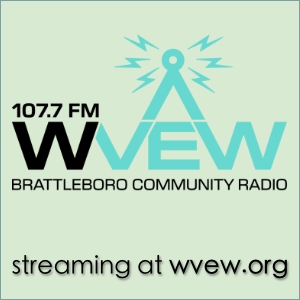Ever since the relationship between Rescue and Brattleboro was ruptured in 2022, the Town has been faced with the challenge of arranging for EMS services. While the explanations for the 2022 break have been vague and unconvincing, the plan is for the Selectboard to decide how to proceed at its 19 September meeting. There are three options. Details on the three are worked out in Town Manager Potter’s 1 September “Transition Update” memo and a 7 September “Supplemental” memo (hereafter first and second memos); both of them, and much more information, is posted at the dedicated Fire-EMS Transition section of the Town website. . It is important to note that Mr. Potter’s analysis of the three options are focused on the first year–FY25 impacts—on the General Fund. Longer-term financial impacts for a Town EMS are not estimated.
The bid from AMR turns out to be very different in the two memos. AMR would charge in the first year $1,660K, and so, according to memo 1 the FY25 cost to the General Fund was estimated to be $738K. After Town staff followed up with several questions about the AMR proposal, AMR made clear that it would pass through a substantial amount of collected revenues (the estimate ranges from $700-791K). Given projected revenue return, contracting with AMR might result in a $34K increase to the FY25 budget or a $54K savings to the General Fund. There are two important caveats to the AMR proposal. First, AMR proposes stationing only one ambulance in town, that to be always staffed by one EMT and one paramedic. Because of its limited service plan (one ambulance, two staffers), AMR explicitly acknowledges it will only be able to handle about 85% of calls. How calls would be handled when more than one unit is needed at a given time is left open. AMR has said that it would be willing to contract for more ambulances and more qualified staff, but that would entail additional costs, probably substantial ones, for the Town.
AMR has also indicated that it would, for the estimated 85% of incidents it will cover, not want BFD staff involved in calls. This supports the Town staff’s assessment that there would be low levels of interorganizational coordination, but that is only the case if BFD, contra its chief’s declared policy, ceases its policy of responding to all emergency calls received by Dispatch.
The impact of a Town EMS on the FY25 budget is estimated to be a gain of $55-156K depending on alternative low/high revenue expectations. (In other words, once the fees paid to Golden Cross in FY24 are cancelled out, there will be savings to the FY25 General Fund of between $55 and $156K, all other things being equal.) It ought to be noted that Town staff approached the task of estimating expenses and revenues in a thoughtful and responsible way. Even so, estimates of the net impact do not take into account the effects of a number of still-to-be decided questions such as the method of billing and rates, and collection practices. Moreover, there have been persistent staffing challenges at BFD, always explained by special circumstances, but worrisome nonetheless. It may be possible to stabilize staffing by increasing pay and benefits at BFD but that may raise the question of equity with respect to other municipal employees.
Choosing a Town-based EMS also requires substantial capital costs. Obviously, the single biggest category in start-up costs is for ambulances (a fleet of three is planned). There are four different options, depending on the configuration of vehicles, ranging in total from $600K to $1,250K. (Given supply chain issues, the Town may use leased vehicles for up to two years.) Because ambulances have a useful life of seven to ten years, there will be annual transfers from the General Fund for an ambulance replacement pool. There are other start-up costs as well. Taken altogether, the cost for starting up a Town EMS is estimated to run from $1.3 million to $1.9 million depending on vehicle choices.
There are two options for covering start-up costs. The first would be to borrow the necessary funds, but that will require a vote of RTM, either at a specially warned session or at the March annual meeting. (It may be that only capital items could be bonded.) Alternatively, the Selectboard could draw on the $2.7 million remaining in ARPA funds, at least for the capital expenses; there are questions about the wisdom, at least, of using ARPA monies for annual operating expenses. The Selectboard set aside but did not obligate ARPA funds for a Town EMS earlier in the year, but Board members repeatedly assured concerned citizens these funds would only be committed after a process of community engagement–which has not yet occurred–that considers other critical and expensive capital projects such as swimming pool improvements and dealing with deficiencies at DPW facilities (Town staff previously generated a list of some 40 capital projects). Using ARPA funds for an EMS start-up means not addressing other capital needs or bonding for them.
An important drawback to a municipal EMS is a lack of certainty. While AMR and Rescue are proposing, subject to final negotiations, five-year contracts at fixed prices with specified inflation factors (4% and 5%, respectively), the estimated costs and revenues for a Town EMS are given only for the first year. Moreover, because the Town does not have experience as a sole provider of EMS, one should allow for the possibility that unanticipated costs might be realized, though there is always the happy possibility that expenses might be overestimated or revenues underestimated. At the same time, it is true that five-year contracts will have to be renegotiated while, once operational, a Town EMS would be on-going. Should, however, the Town wish to exit the EMS business at some point, unwinding its services may be difficult and expensive.
Against the problem of uncertainty, there is the putative advantage mentioned by some Selectboard members that the Town would have more control with its own EMS than with contractors. A higher level of control is clearly desirable when there are deficiencies in care and outcomes, but the Triton consultant said several times that their study had not found faults with Rescue’s patient performance. More control also means more responsibility for the Fire Department (facilitated by the plan to add an EMS supervisor to the staff) and for the Town Manager’s office which will have new services which require oversight.
The last option is to contract with Rescue. Rescue would charge the Town $454K in the first year with an 5% annual increase over a five-year contract. The FY25 Rescue charge would be nearly 60% higher than the fee Rescue was going to charge for FY23 when the contract was not renewed. Moreover, because Rescue’s proposal anticipates using Keene dispatch services, rather than those of Brattleboro, there will be no revenues to Dispatch (Rescue paid $50K in FY22); of course, with a Town EMS there will be none either. On the other hand, Rescue proposes only very limited BFD responses to emergency calls which may allow savings in a beefed-up BFD budget. Two other points deserve mention. First, as a Rescue client, presumably the Town will no longer have representation on the Rescue board as do surrounding member towns. Second, of the many people who submitted comments to the “feedback” section of the EMS Transition site and who expressed a preference, Rescue was the nearly unanimous choice for EMS.
Mr. Potter’s memos also include identification of a number of intangible factors which are scored on a riskiness metric. The first memo articulates staff’s reasoning for given scores but others might come to different judgments.
F. David Levenbach
District 3 delegate to the Brattleboro Representative Town Meeting
13 Sep 23






An Astute Analysis of Financial Impacts of EMS Decision
My personal focus regarding the upcoming selection of Brattleboro’s EMS provider has been on quality of care on life-and-death ambulance calls. Watching the September 12 public forum, frankly I was disturbed that so much of the discussion was debate about costs and saving money, with so little attention to quality of care.
I found conflicting assertions over costs to be confusing. This morning, slowly and attentively I re-read Fidel’s analysis comparing financial impacts of the competing proposals, and ended up with greater clarity about the particulars of cost/benefit.
Fidel’s analysis is dispassionate and covers the major financial issues. What it particularly brought to my attention was the start-up costs of the proposed municipal EMS.
“Taken altogether, the cost for starting up a Town EMS is estimated to run from $1.3 million to $1.9 million depending on vehicle choices.”
Fidel points out that the proposal anticipates diverting one-time American Rescue Plan Act (ARPA) funds from, “other critical and expensive capital projects such as swimming pool improvements and dealing with deficiencies at DPW facilities (Town staff previously generated a list of some 40 capital projects). Using ARPA funds for an EMS start-up means not addressing other capital needs or bonding for them.”
OR the alternative to diverting ARPA funds is a massive bond issue, which will add to taxpayer’s burden for many years to come.
SK-B
P.S. Incidental to financials, Fidel mentions several issues include the following: “there have been persistent staffing challenges at BFD, always explained by special circumstances, but worrisome nonetheless. ” He is talking about recent, extremely large turnover in the Fire Department, and the likely effects of a high turnover rate.
No such thing as a free lunch, I'm told
“OR the alternative to diverting ARPA funds is a massive bond issue”
Right. The board would like to take $1.5 million from ARPA to make this seem affordable in the short term, which means that’s $1.5 million not being spent on other things.